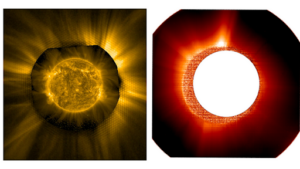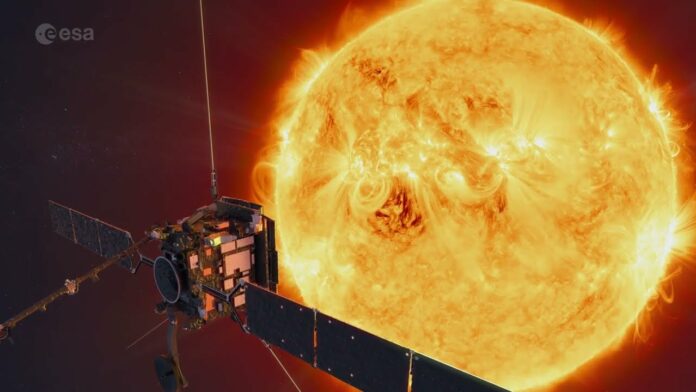HUNTSVILLE – Researchers at the University of Alabama in Huntsville have supported a ground-breaking measurement that is helping solve a 60-year-old cosmic mystery. The question is why is the sun’s corona, the outermost part of the sun’s atmosphere, is so much hotter than the surface of the sun itself.
Dr. Gary Zank, director of UAH’s Center for Space Plasma and Aeronomic Research and the Aerojet Rocketdyne Chair in Space Science and the University of Alabama Board of Trustees Trustee Professor, worked with Dr. Lingling Zhao, an assistant professor in the Department of Space Science; and Dr. Laxman Adhikari, a research scientist at CSPAR, to support the initiative.
Solar scientists from several countries worked to use two spacecraft in a first-ever collaboration to obtain the needed measurements that probe the depths of the corona. The UAH researchers have provided the theoretical underpinning and modeling expertise to interpret the observations.

“It is very exciting to make observations that go towards supporting a theoretical model that was put forward to explain what has been one of the most important problems in solar and space physics in the past nearly 60 years,” Zank said. “So, any progress in solving this critical problem of how the corona is heated is a major step forward.”
Zank and his team have been one of the primary developers of theories to explain the heating based on the dissipation of magnetic turbulence generated by the Sun.
The sun’s corona extends 5 million miles into space and consists of a gas of electrically charged particles known as a plasma. While the surface of the Sun is around 10,000 degrees F (6,000 degrees C), the corona is much hotter, reaching 1.8 million degrees Fahrenheit (1 million degrees Celsius). The temperature difference indicates that some physical mechanism for transferring energy into the plasma is at work. Solar researchers have long theorized that turbulence in the solar corona could result in significant heating of the plasma.
Historic cosmic team-up
Cracking the mystery has presented a challenging problem. There are two ways to investigate the Sun: remote sensing and in-situ measurements.
In remote sensing, the spacecraft is positioned a certain distance away and uses cameras to look at the Sun and its corona in different wavelengths.
For in-situ measurements, the spacecraft flies through a targeted region and takes measurements of the particles and magnetic fields encountered.
Solar physicists are investigating the sun with two spacecraft – the Solar Orbiter, managed jointly by NASA and the European Space Agency, and NASA’s Parker Solar Probe.
The Solar Orbiter gets as close to the sun as it can and also performs remote sensing operations, while the PSP gets even closer to perform in-situ measurements to provide specific information about the small-scale processes within the plasma itself. To investigate the temperature differential, it is impossible to gather all the data needed with just one spacecraft.
American and European researchers found a way to coordinate both spacecraft in a collaborative effort by using the Solar Orbiter’s remote sensing Metis instrument in conjunction with the Parker Solar Probe to gather the necessary data. Metis is a coronagraph that blocks out the light from the Sun’s surface and takes pictures of the corona.
On June 1, 2022, the two spacecraft were in a nearly perfect orbital configuration required to make collaborative measurements. To make the maneuver possible, seen in this Metis video, commands were sent to the PSP to roll the spacecraft 45 degrees to position its instruments to produce the first ever simultaneous measurements of the large-scale configuration of the solar corona and the microphysical properties of the plasma.
“The measurements can be interpreted well in terms of the theory,” Zank, a co-author on the resulting paper, said. “While very suggestive, it is not necessarily a unique interpretation, and more measurements are needed before one can definitively conclude that the theoretical approach has properly captured the physics responsible for heating the corona.
“However, observationally, it is a critical and important result in suggesting/indicating the theory is headed in the right direction. The ability to use both Solar Orbiter and Parker Solar Probe has really opened up an entirely new dimension in this research.”
Don’t miss out! Subscribe to our email newsletter to have all our smart stories delivered to your inbox.



